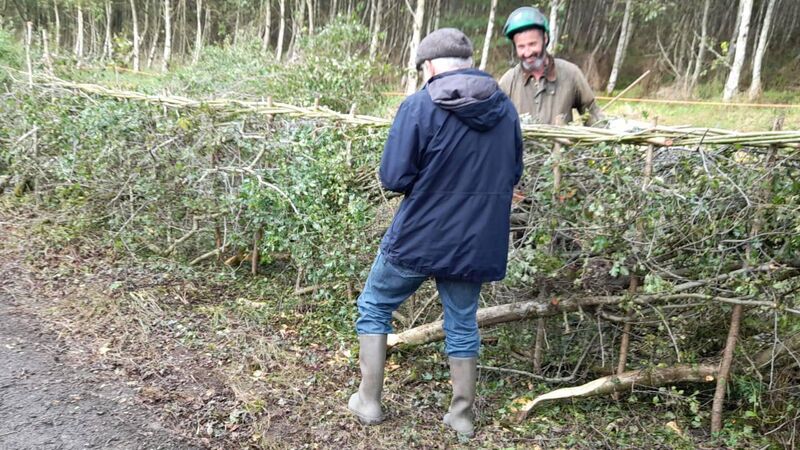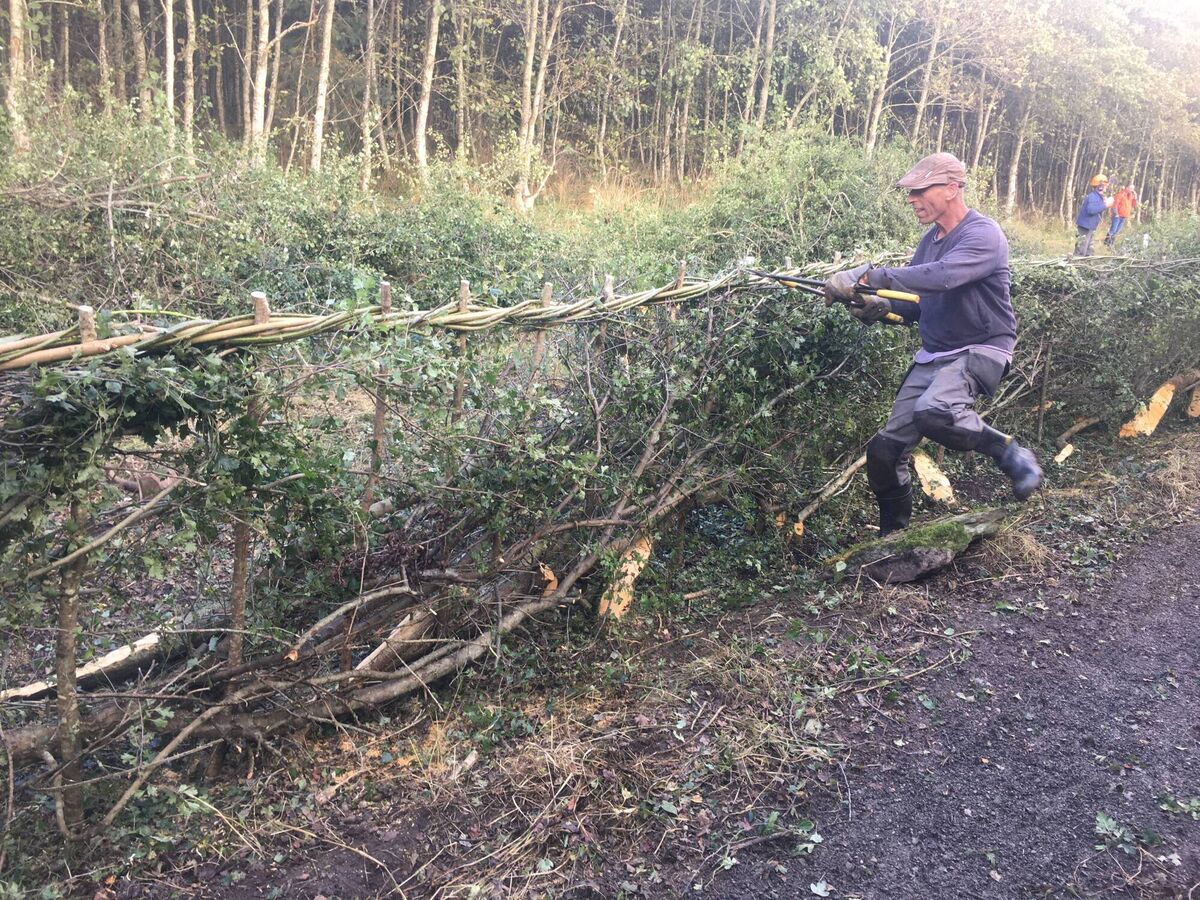Anja Murray: Discover traditional craft of hedge-laying and give hedges the respect they deserve

Hedge-layers at last years hedge-laying championships in County Offaly.
In Ireland we are very proud of our hedgerows. We give out about them, but we love them. They frame the character of our farmed landscapes, host lots of nesting birds, bring colour at every time of year, and give the impression that we have a lot more trees and woodlands than we really do. But we have been negligent in how we manage hedges, and rarely give them the kind of care and management attention that they need.
Have you ever heard of hedge-laying? This traditional craft is what keeps hedges ‘young’, it's called ‘rejuvenative’ management. Hedge-laying can be repeated cyclically, so that many of our oldest hedges are growing for hundreds of years. It’s what keeps hedges thick and stock proof, before the days of barbed wire fences.
When laying a hedge, the stem of a hawthorn is cut near the base, but not right through, and ‘laid’ over sideways along the length of the hedge. Because each laid stem of hawthorn remains attached to the roots by a ‘heel’ of the outer later, it keeps on growing, sending new thorny shoots up from the laid over length. This is what makes a thorny hedge impenetrable to sheep and cattle for years to come and good for wildlife too. As much as two-thirds of our native songbirds nest in hedges, choosing the thickest lower two metres for the best protection from predatory crows, kestrels, and foxes. Hedge-laying provides us with a pertinent example of land management that this good for both the farmer, the farm animals, and wildlife.
Now that the birds have finished nesting, and the sap is retreating in the whitethorns, hedge-laying season is beginning. If cut while the sap is still in the branches, the cut stems can be weakened by the shock, hedge-laying always takes place only in winter when trees are dormant. Hedge-layers wielding billhooks and chainsaws are eyeing up hedges all over the country in need of rejuvenation.
In recent years, the craft of hedge-laying has been undergoing a bit of a revival in Ireland. Last autumn I attended the ‘All-island Hedge laying Championships’ on a working farm in County Offaly. Each contestant was there to demonstrate their skill by laying a 10 metre length of hedge that day. The work was beautiful, each branch skilfully intertwined in to a dense living barrier.
Some of Ireland’s most ancient hedges were planted in the medieval period to demarcate townland boundaries, the fundamental unit of land tenure then. Hedge-laying is what has maintained many of these hedges for so long, when the natural lifespan of a hawthorn is only about 80 years. Generally speaking, older hedges accumulate species as time goes on, so they often have an impressive diversity of species such as hazel, guelder-rose, spindle and crab apple.

Most of Ireland’s hedges, however, were planted as a result of the Enclosures Acts in the 18th and 19th centuries, when open fields and common land were parcelled in to distinct fields. The Enclosures Acts were enormously controversial at the time, although they have left us with a network of green veins through the countryside which knit the landscape into a patchwork quilt.
Because hedges are so ubiquitous and familiar here, its easy to forget that they are a man-made feature with a function on the farm and an occasional need of maintenance. Contrary to popular assumption, hedges need some form of management if they are to retain their function on the farm and their value to wildlife. Now, more than half of Ireland’s hedges are in poor condition: ageing, open, dying and failing to provide shelter to either wildlife or farm animals.
When hedges are left unmanaged in the long term, whitethorns die off, fall over, leave gaps, the bank becomes eroded by trampling stock. A huge proportion of hedges all over Ireland are simply being left to die on their feet through neglect and abandonment.
Of course there is also an issue with hedges being bulldozed out of existence. Hundreds of kilometres of hedges across Ireland are still cleared away each year for convenience and intensification. Another abuse we inflict on our hedges is routinely flailing with a blunt flail, which leaves an unsightly mess of frayed wood and leaves stems open to infection and disease.
It's time we undertook to manage hedges well, with the respect that they deserve, so that we have them in our landscapes in perpetuity. More and better training for hedge cutting contractors is needed. More skilled hedge-layers are needed too.
This year the Hedge Laying Association of Ireland will be running training events all over the country to help more people learn this special craft. Primary schools are being recruited currently for a webinar series about hedgerows and hedge-laying.
At a time when Ireland is officially facing a biodiversity crisis, we can’t afford to lose more of our hedgerows, whether to neglect, careless butchering, or active removal.
Apart from the wildlife value of healthy hedges, there are many other benefits too. Root systems help regulate the flow of water through the landscape in times of flood risk, so hedges can contribute to flood resilience. Hedges and hedge banks can trap soil particles moving downslope, thus minimising siltation in streams and rivers and alleviating pressure on aquatic habitats.
Clearly, there are many reasons to be enthusiastic about hedges. Last year’s hedge-laying championship was on the farm of Eamonn Mc Loughlin, who saw his father laying hedges years ago. Eamonn is effusive about the value and good management of hedges, and keen for more people to learn the craft of hedge-laying. What struck me most about Eamonn’s passion for hedges is his claim that if he could bottle the smell of a good hedge, he would be a wealthy man.






